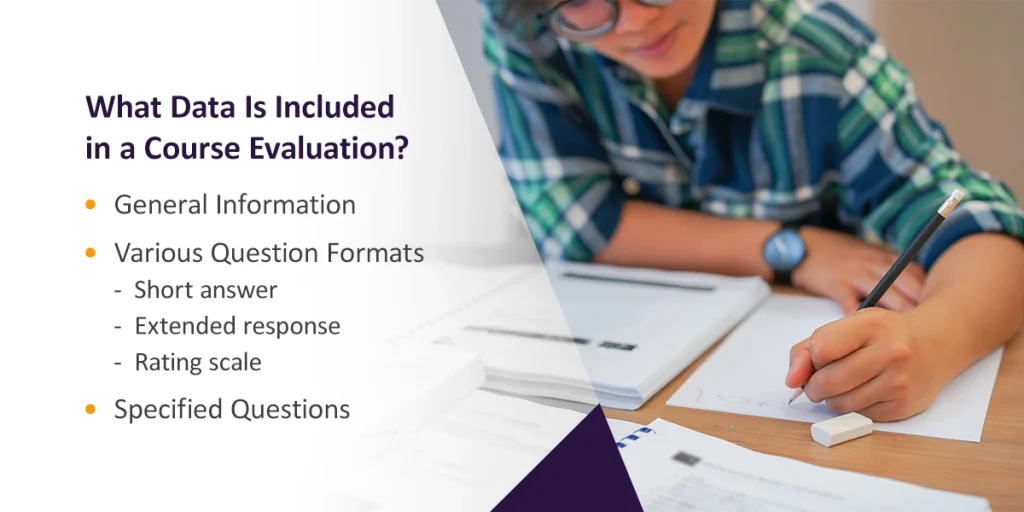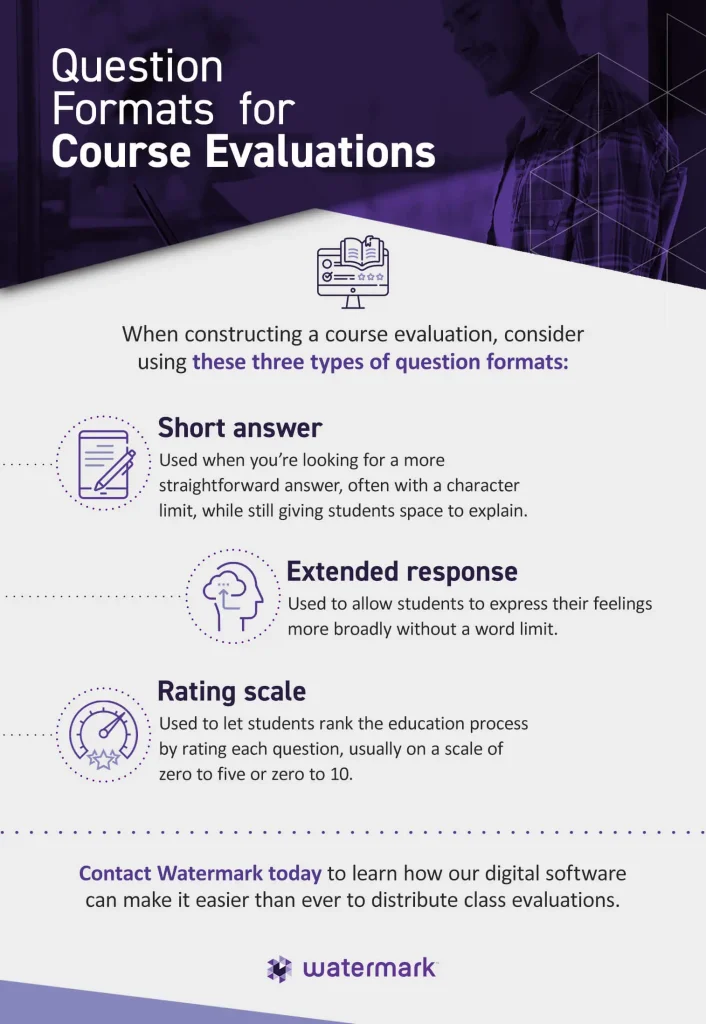



Higher education institutions use course evaluations to gather information and feedback from students. Usually, faculty will send out evaluations after the term or year has ended. Course evaluations are an excellent way to see how students responded to a particular teaching style or handled the subject matter of a course. If the evaluation is effective, educators can draw valuable feedback and use it to improve and strategize about future classes.
Student course evaluations will create a data set that provides educators with the tools to grow and learn from their pupils.

A course evaluation survey usually involves various questions asking the student to identify how they felt the course went, their impression of the teaching style, thoughts on the course materials, and an overall assessment of the subject matter. Sometimes these questions will be more general. Other times, you can focus them on a certain topic. The evaluation will provide the title of the course, directions for how to fill it out, and sometimes a central goal that the evaluation is designed to answer. Three main sections usually comprise the body of the evaluation.
Sometimes the course evaluation will only target general information about a course. Questions will revolve around broader categories, varying from teaching style to classroom environment.

Questions will often be structured using more than one format. Varying the question styles allows educators to gather more information and offers more freedom to the students to answer in the way that suits them. Some people, for instance, are more comfortable working with a rating scale, while others may want to express direct comments about the class in an extended response section. Here are the various question types you’ll likely see on a course evaluation:
Some evaluations may target more than just a general topic. They may be precise and centralize around one theme, with in-depth questions that all relate to that topic. Specific questions are great ways to pull actionable data. The more specified and detailed your questions are, the clearer your feedback will be, and educators can use it to grow and learn from the new information.
Course evaluations are almost always kept anonymous. This anonymity is essential because it lets students answer without fear of being penalized for answering truthfully. Evaluations are mutually beneficial to students and educators — it gives educators feedback to grow from and gives students a chance to share what worked and what didn’t in the class. If this relationship breaks down and students don’t trust the evaluation process, then the answers lose their honesty, and the feedback becomes compromised.
The importance of anonymity has made the idea of online evaluations more appealing, as students can simply fill out a form and send it in without even being in the classroom.
Whether an evaluation is general or specific, the design of your evaluation and the way you ask your questions will significantly impact your results. Though you might think of an evaluation as being relatively straightforward, there are actually a lot of moving parts that can affect responses. Various subjects and question types make the situation more complex. Here are some typical subjects and common questions on course evaluations:
An evaluation of class materials helps identify the books, tools, or software that helped a student and those that didn’t. Knowing if a particular material did not work for students will help an educator decide whether to replace this material with something else or eliminate it altogether. Class material questions work well with a rating scale. Some common questions include:
Students could rank these questions on a scale of effectiveness, which you can easily translate into actionable data.
Evaluations can also be effective in judging the structure of a course. Various rating-scale questions can help define how effective the structure was, including:
Some open-ended questions for this topic might include:
Instructor performance can be one of the most significant takeaways from evaluations. It allows a direct line of feedback from student to educator. Some great questions to ask are:
You can place these questions on a ranking scale or in a short-answer response section.

Watermark has the digital software you need to make it easier than ever to distribute class evaluations and gather information. Our software can collect evaluation information without manual data entry, allowing you to analyze organized data in a simplified, stress-free way. Make the feedback process easy and make your institution a place of continuous learning. Request a demo today!





























































































































































































































































































































































































